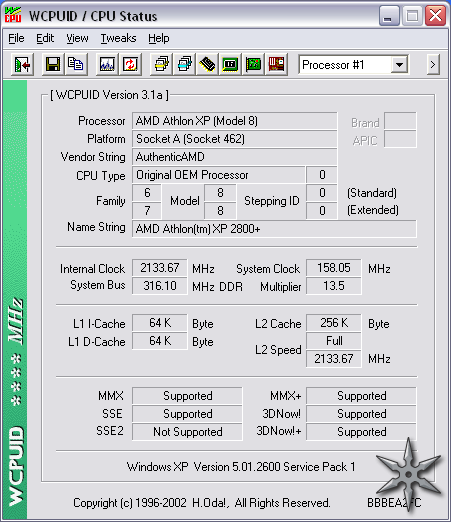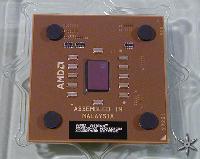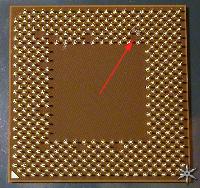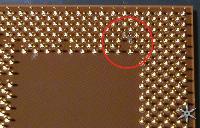After careful consideration I have decided to transfer all hardware review activities to a new domain. I purchased Hardwareasylum.com in 2012 and have been working hard to build a new and improved Ninjalane on that domain. If you are reading this you have reached one of the archived articles, news, projects and/or reviews that were left behind during the site migration.
Please update your bookmarks and be sure to visit the new and improved Ninjalane at Hardwareasylum.com
Soltek SL-75FRN-L Motherboard Review
Author: Dennis Garcia
Published: Monday, February 03, 2003
Overclocking - Preparation
Overclocking Preparation
We all have heard that many Tbred processors come unlocked direct from AMD (all of the L1 bridges are connected) though just to make things difficult AMD locked away the lower multiplier values making extreme overclocking a little difficult. One of the nice features of the nForce2 chipset is that you can actually gain access to the lower multiplier values right in the bios. Knowing this we attempted to adjust the multiplier values in the bios (all were listed) but anything below x12.5 would hard lock the system requiring a CMOS reset. This was very puzzling at first but with a little research the problem and solution quickly became clear although the reasons behind the issue still did not.
Here is the situation; it would appear that the SL-75FRN doesn't unlock the lower multipliers on Tbred processors when the processor uses a multiplier above x12.5. This can usually be attributed to something in the bios though it is still yet unclear if this was done intentionally or of the bios is still under development. Don't be surprised to see another BIOS released soon that addresses these issues.
In the mean time there is a work around. ocworkbench posted an article that talked about unlocking the 2400+ Tbred by shorting two pins on the processor. You also have the option of painting over the 5th L3 bridge but we didn't have much luck with that process. So, we opted for this method instead, and it worked like a charm. What you can expect to happen is that your default multiplier clock will be set to 5.5 and is fully adjustable from that point. The process isn't without its pitfalls though. I found that with the jumper in place I could no longer access any multipliers above x12.5. So it would appear that we traded the upper multiplier settings for the lower ones, not really a problem in this case so we ran with it.
Before modding the processor a quick overclocking test was performed to see what the maximum bootable speed would be. With some voltage adjustments the system was able to post 1.8@2.1Ghz and load windows. The system was stable enough to run a few benches, though I wouldn't say it was 100% with the current cooling method.





